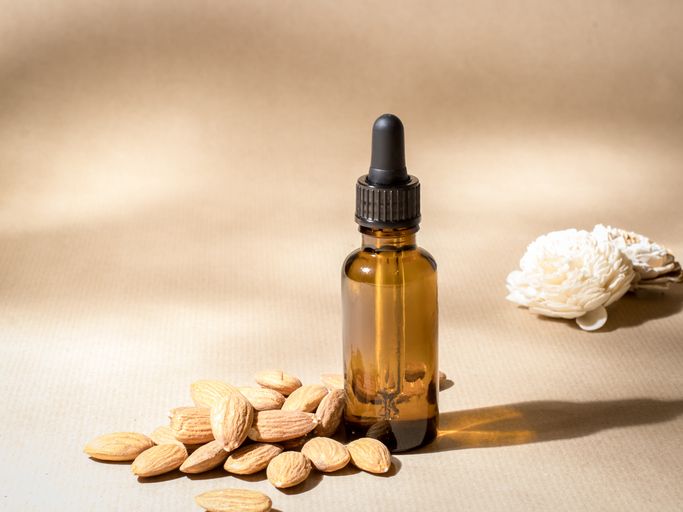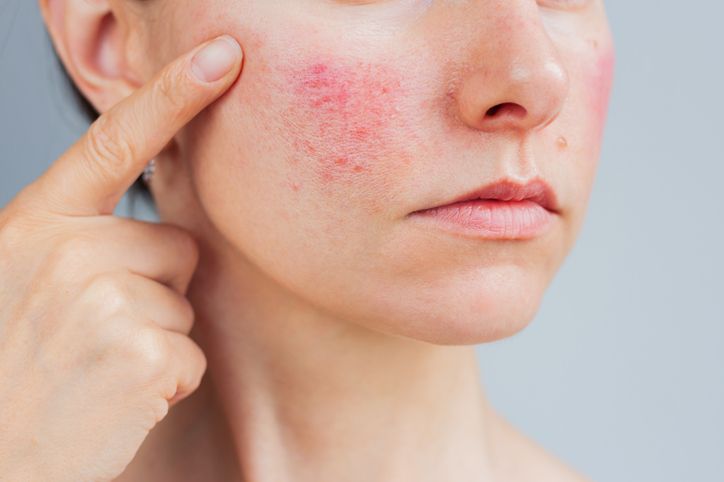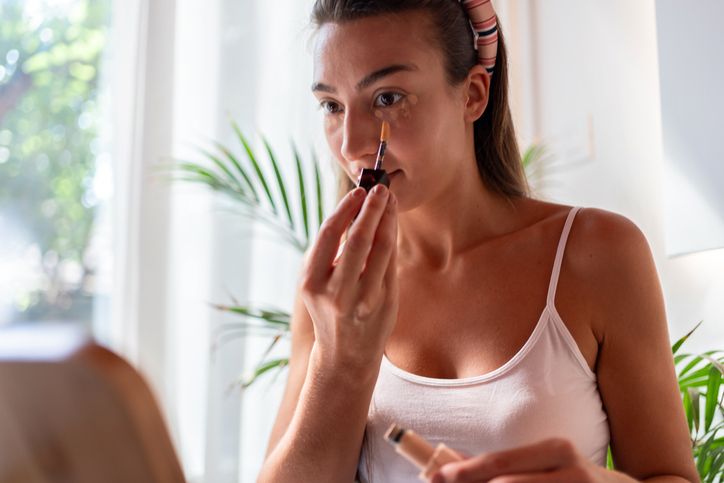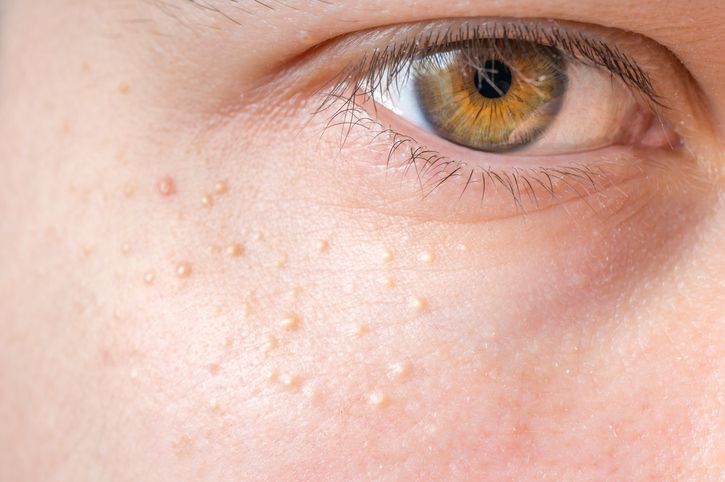- Home
- Trend
- Weight Loss Strategies
- Acne Tips
- Hair Health Information
- Blemish Removal Tips
- Acne Scar Removal Tips
- Muscle Building Techniques
- Intimate Care Tips
- Postpartum Intimate Care
- Eye Bags Wiki
- Tips for Face Slimming
- Secret of Permanent Hair Removal
- Breast Enlargement Tips
- Cure to Snoring
- Marionette Lines
- Skin-Tightening Secrets
A head of smooth, flowing long hair is a dream for many women—it enhances femininity and attracts attention. However, in reality, hair tends to get tangled easily. Tangled hair is difficult to comb through, and when pulled forcefully, it breaks, often leading to scalp pain. This article discusses the causes of tangled hair and prevention methods, helping you develop good hair care habits and maintain healthy, beautiful strands.
1. The Impact of Hair Cuticles on Tangled Hair
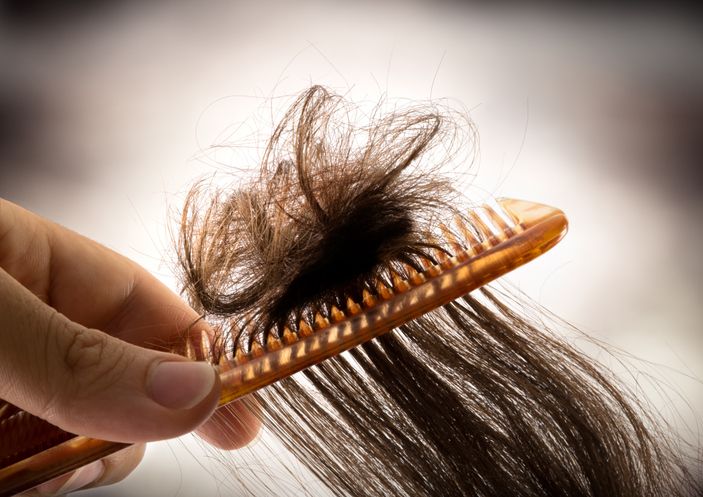
Have you ever heard of hair cuticles? When you magnify hair under a microscope, you’ll notice the outer layer of hair contains tiny scales that form a protective barrier, shielding the hair from external damage. Under normal circumstances, these scales lie flat against the strands, making the hair smooth and easy to manage. However, when hair cuticles are damaged—due to heat styling, frequent coloring, or perming—the scales lift, causing the hair to become rough and lose its shine.
After washing your hair, the cuticles naturally open. This is because the negatively charged particles in shampoo repel the negatively charged hair strands when wet, causing the hair to expand and the cuticles to lift. This is why wet hair looks messier and more unruly than dry hair.
When dry, the cuticles are tightly bound and strong, but when wet, they become soft and more likely to peel away. This results in tangles and hair strands intertwining. Once this protective layer starts to break down, the nutrients and moisture in the hair are lost, and the hair quality deteriorates, resembling dry straw. Therefore, avoid harshly rubbing your hair when washing, and refrain from combing it vigorously while it’s still wet, as the friction can damage the hair’s structure.
2. The Correct Way to Wash Hair and Protect the Cuticles
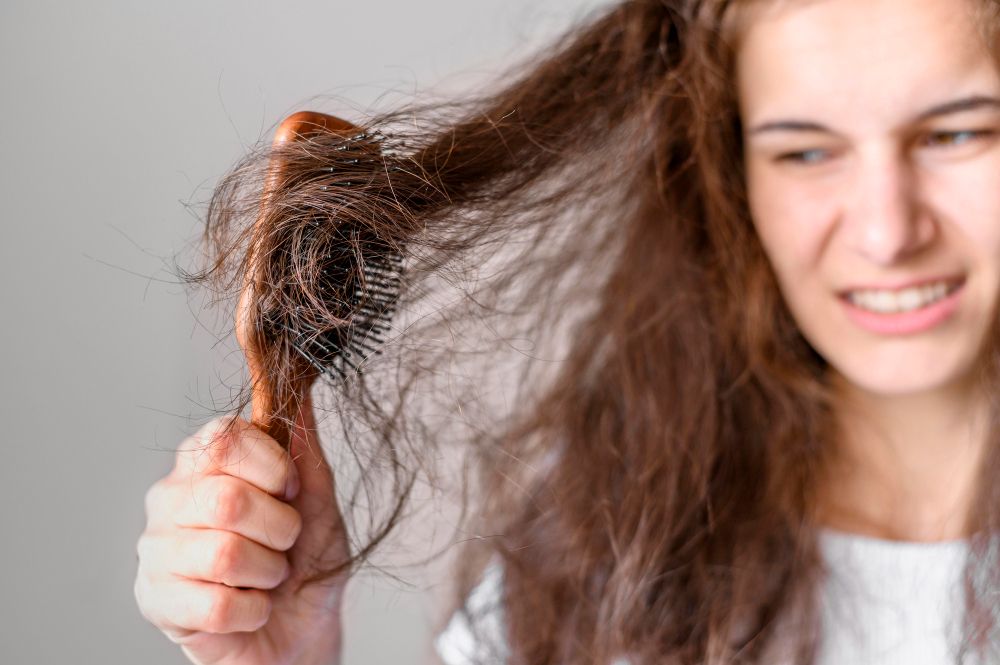
Before washing your hair, check for tangles. Gently detangle using a wide-tooth comb or your fingers to avoid damaging the cuticles. This helps prevent tangles after your hair gets wet. Next, wet your hair and scalp with cool or lukewarm water, then apply shampoo and lather it up in your hands before evenly distributing it throughout your hair and scalp. This helps prevent shampoo from being too concentrated and irritating the cuticles and scalp.
Use your fingertips to massage your scalp gently, then lightly rub the shampoo into the strands. Rinse thoroughly with water to remove all shampoo, dirt, and oils. Pay attention to areas like the hairline, the back of the neck, and the ears, ensuring they are thoroughly rinsed to avoid product buildup.
免費體驗
F8 Hair Regrowth Treatment
1 Minute Self-Registration
Date should not be before minimal date
3. The Correct Way to Blow-Dry Hair and Protect the Cuticles
Start by using a towel to gently blot the moisture from your scalp and hair. Pat the towel rather than rubbing, as this can damage the cuticles. This will help absorb some of the water, allowing your hair to dry faster. Apply a small amount of hair oil to nourish the strands before blow-drying, preventing tangles and minimizing heat damage.
When using a blow dryer, avoid the hottest settings. Instead, use a medium or cool setting to dry your hair, starting from the roots. Do not focus the heat on one spot for too long—use your fingers to gently separate the strands to allow air to circulate through the hair. Dry your hair in the direction it naturally grows, from the roots to the tips, combing with your fingers to help smooth the hair as you go. Avoid holding the blow dryer too close to the hair to prevent heat damage.
Limit hair washing to once or twice a week; washing too frequently can lead to overly dry hair.
4. The Consequences of Tangled Hair
1. Hair Damage
When hair tangles, people often forcefully comb or pull it apart, which can lead to breakage and hair loss. This premature shedding of hair that’s still growing increases the risk of hair thinning. Forcefully detangling the hair doesn’t resolve the problem and can worsen hair loss, making the scalp more fragile.
2. Increased Difficulty for Hairstylists
Tangled hair makes it more challenging for hairstylists to cut, perm, or curl your hair. They may need to apply more water or conditioning products to detangle the hair, and even after styling, the tangles may impact the overall appearance. If you style your hair at home, it may take extra time to manage tangles, possibly causing delays for work or school.
3. Impact on Personal Image and Confidence
Tangled hair is every girl’s nightmare, especially when the ends are a mess, making the hair look rough and fragile. This inability to achieve a neat hairstyle affects confidence, leading to dissatisfaction and discomfort. The feeling of having hair that doesn’t measure up to others can also negatively affect your mood.
4. Increased Hair Care Costs
To deal with tangled hair, many people purchase various hair care products like conditioners, hair oils, and masks, or go for professional hair treatments at salons. This can lead to added monthly costs. Moreover, many advertisements exaggerate product effectiveness, leading to the purchase of expensive, ineffective products.
5. 6 Common Causes of Tangled Hair
1. Nutritional Deficiencies
Hair’s main component is protein, particularly keratin. Omega-3 fatty acids are also essential for hair health, maintaining shine and softness while preventing dryness and tangling. Vitamins A, E, C, B, as well as zinc and iron, are vital. A lack of these nutrients can cause hair to become brittle, dry, and prone to tangles and split ends. Ensuring adequate nutrition helps maintain smooth, healthy hair.
2. Dry Hair
Maintaining a balanced scalp moisture level is crucial. If the scalp becomes overly oily, pores can clog, leading to scalp issues. On the other hand, excessive dryness can lead to dandruff. More concerning is dry hair, which results from insufficient moisture and natural oils. Harsh products can exacerbate dryness, leading to tangles, breakage, and painful scalp tension.
3. Not Drying Hair Immediately After Washing
After washing, many people towel-dry their hair, but some prefer to air dry. This causes moisture to evaporate quickly, leaving the cuticles open and the hair structure weakened, especially at the ends, which leads to tangling.
4. Hair Length
Long hair is more susceptible to tangling because nutrients cannot reach the tips, which become dry and prone to knots. It’s advisable for people with long hair to maintain regular hair care or trim dry ends to keep their hair healthy.
5. Frequent Sun Exposure
Most people think of skin protection when they go to the beach, but did you know that sunlight can damage your hair too? UV rays can open the hair cuticles and dry out the hair, causing tangling, discoloration, and damage.
6. Improper Combing
Using low-quality, dense-toothed combs or brushing too forcefully can lead to hair breakage, making it more prone to tangling. Combing wet hair is also a no-no, as the cuticles are open and vulnerable to damage.
免費體驗
F8 Hair Regrowth Treatment
1 Minute Self-Registration
Date should not be before minimal date
6. 4 Ways to Improve Tangled Hair
1. Start Combing from the Tips
Most people start combing from the roots, but when hair is tangled, it’s better to start from the ends. Gently detangle the knots, then work your way up to the roots to avoid creating more tangles.
2. Use Hair Care Products
Using hair care products can significantly reduce tangling. Start with a conditioner to detangle the hair, and if that doesn’t work, try using a hair mask for deeper repair. These products can help lock in moisture, improving hair smoothness and reducing tangles.
3. Ensure Adequate Sleep
Lack of sleep impacts scalp circulation, depriving hair follicles of nutrients, oxygen, and moisture, which weakens hair and makes it more prone to tangling. Sleep also affects mood, leading to stress, which disrupts hormones and impacts hair health. Aim for 7–8 hours of sleep every night.
4. Avoid Frequent Coloring, Perming, and Straightening
Chemical treatments like hair dye, perms, and straightening open the cuticles to change the hair’s structure. This can damage the cuticles and lead to breakage. Protect hair by using heat-protectant sprays and nourishing hair products to prevent further damage.
7. Easily Resolve Tangles with Perfect Medical’s F8 Hair Regrowth Treatment!
Preventing tangles isn’t difficult, but it can be a hassle. If you’d like to skip all the steps and save time, try Perfect Medical’s F8 Hair Regrowth Treatment! To prevent tangles, we start with "nourishing" your hair. Using medical-grade low-energy soft lasers, we penetrate the scalp to activate hair follicles, promote blood circulation, and repair damaged cuticles. This treatment ensures healthy follicle growth and smooth hair.
Along with medical-grade hair regrowth serums, we improve the scalp’s moisture balance and restore hair nourishment, helping you grow thicker, healthier, and tangle-free hair. Whether you’re tackling tangles or hair loss, Perfect Medical is here to help!
Click the link below to register for a free trial session.
Book a Trial: Perfect Medical F8 Hair Regrowth Treatment免費體驗
F8 Hair Regrowth Treatment
1 Minute Self-Registration
Date should not be before minimal date
FAQ

What are the differences in cuticles across different ethnicities?
East Asians naturally have more and thicker cuticles compared to Westerners. While thicker cuticles should theoretically protect the hair, they can lift more easily in East Asians. Additionally, frequent washing—common in East Asian cultures—opens the cuticles more often, causing more damage. Westerners wash their hair less frequently, so even with thinner cuticles, their hair is less prone to damage.
How do plant oils help prevent tangles? Should I apply them topically or ingest them?
Plant oils like cocoa butter, coconut oil, and flaxseed oil help lubricate hair, reduce static, and prevent cuticle damage, thus minimizing tangles. They penetrate the hair shaft to improve its structure, and they also lock in moisture, keeping hair hydrated. Whether applied topically or ingested, both methods can be beneficial, but topical application directly to the ends of your hair is the most effective.
Can excessive dieting lead to hair damage and tangling?
While excessive dieting doesn’t directly cause tangles, it can lead to nutritional deficiencies that make hair more fragile and prone to breakage and tangling. Stress from dieting can also impact hormones, further affecting hair health.
What should I consider when choosing hair care products?
Choose products based on your hair type. For dry hair, try natural oils like coconut or rose oil to smooth the cuticles and reduce tangles. For oily hair, avoid oils and opt for lighter creams. Always read the labels to avoid products containing silicones, artificial fragrances, or alcohol.
How can long-haired girls prevent tangling while sleeping?
Before bed, apply a small amount of conditioner or oil to the ends of your hair. Avoid tight hairstyles but consider loose braids or ponytails to reduce friction. Using a silk pillowcase can also help reduce tangling. Make sure to dry your hair before going to bed, as wet hair is more prone to tangling.






